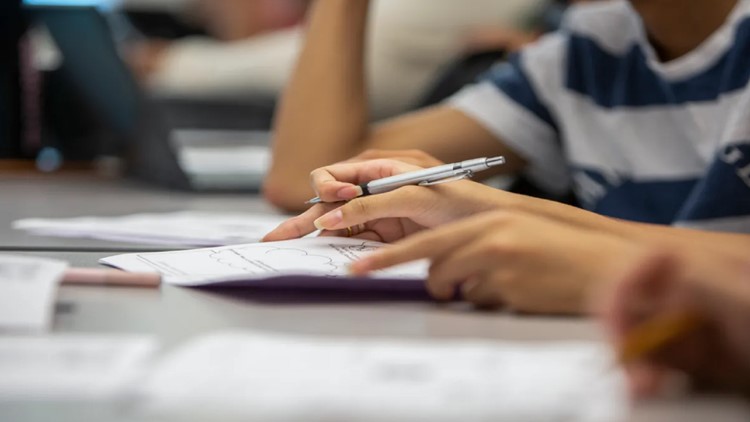CALIFORNIA, USA — This story was originally published by CalMatters.
As efforts to provide a guaranteed income spring up around California, a lawmaker who has pushed for such state-funded pilot programs has set his sights on another population he says should benefit — low-income high school seniors on the brink of adulthood.
State Sen. Dave Cortese, a Democrat from Campbell, is sponsoring a bill for the state to give no-strings-attached checks to about 15,000 high school seniors who have experienced homelessness, starting from around the time of graduation to their fall enrollment in college or vocational school or their entry into the workforce.
About 183,000 California K-12 students were homeless at some point during the 2020-21 school year, according to the California Department of Education.
The proposed legislation does not specify how high school seniors would apply for the payments or how much they would be. Cortese said he’s hoping the pilot program would offer $1,000 monthly checks for four or five months for the 2023 graduating class, possibly costing the state about $85 million a year.
The legislation passed out of the Senate Education Committee on Wednesday with little opposition and heads to the Senate Human Services Committee.
The bill arose from an original idea to pilot a basic income program at select California State University campuses, where nearly 11% of students reported experiencing homelessness in 2018.
Cortese said he’s proposing it for graduating high school seniors instead to avoid interfering with students’ financial aid calculations; the bill could help students living in poverty rent an apartment or pay for food during college if they enroll, but there’s no requirement to do so.
Christina Torrez, a Bakersfield College student and former foster youth who experienced homelessness in high school, told lawmakers on Wednesday that a basic income program would allow students to concentrate on their schooling.
“Honestly, school wasn’t important to me at the time, because I had to figure out where I was going to eat, where I was going to sleep,” Torrez said. “What this does, it allows a whole burden to come off a youth that is homeless.”
It’s the latest guaranteed income proposal for California, which has seen several local governments start pilots after a highly publicized experiment in Stockton from 2019 to 2021 giving 125 families $1,000 each month.
The aim is to alleviate poverty and give recipients more flexibility on how to spend the money than is offered by traditional social services. Critics have raised concerns the checks would discourage work.
Early results of the Stockton study found full-time employment increased 12% in the full year and participants reported less financial instability and improved health outcomes. Former Stockton mayor Michael Tubbs is now an adviser to Gov. Gavin Newsom.
Many of the local efforts are privately funded, but some cities are using federal COVID-19 relief funds.
Last year, lawmakers put $35 million in the state budget to create the nation’s first state-funded program. The California Department of Social Services is preparing to allocate the funds to cities and counties to send out checks to residents, prioritizing former foster youth or expectant mothers. It hasn’t begun taking applications yet.
Cortese said he’s looking for ways to incrementally expand the program toward other groups who could use a “soft landing” on the path toward financial independence, such as high school seniors.
“My vision is that you start installing guaranteed income at the proper point in a person’s life,” to avoid the need for them to cycle through shelters, he said.
“It feels a lot more like a movement,” Cortese said of basic income efforts across the state. “I just need to come back each legislative session and try to add another brick in the wall.”
This article is part of the California Divide project, a collaboration among newsrooms examining income inequality and economic survival in California.
WATCH RELATED: State lawmakers debating how to provide direct relief to Californians (Apr 4, 2022)



